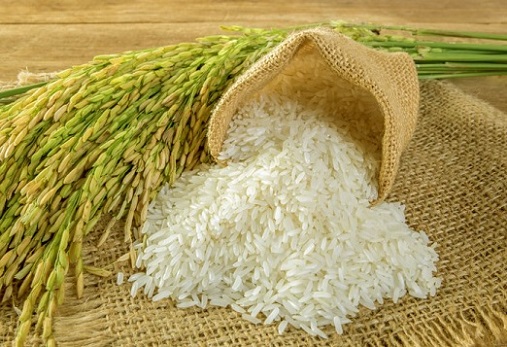Nikhil Prasad Fact checked by:Thailand Medical News Team Nov 24, 2024 1 year, 4 weeks, 23 hours, 26 minutes ago
Health News: The prevalence of Type 2 diabetes is climbing at an alarming rate globally, with over 783 million people projected to be affected by 2045. Managing blood sugar levels is a crucial part of diabetes care, often requiring a combination of medication, lifestyle adjustments, and diet. A staple food in many diets, rice has long been scrutinized for its link to diabetes risk. White rice, in particular, has been associated with elevated risks due to its high glycemic index (GI). However, recent research indicates that high-amylose rice - a variety containing over 25% amylose - might offer a promising alternative for better blood sugar control.
 High-Amylose Rice May Help Control Post-Meal Blood Sugar Levels
What Makes High-Amylose Rice Different?
High-Amylose Rice May Help Control Post-Meal Blood Sugar Levels
What Makes High-Amylose Rice Different?
Unlike the highly branched amylopectin in regular white rice, amylose has a linear structure that resists enzymatic breakdown in the gut. This means high-amylose rice is digested more slowly, leading to a gradual release of glucose into the bloodstream. This
Health News report delves into findings from a comprehensive review of 17 clinical studies to explore the potential benefits of high-amylose rice for managing postprandial (post-meal) blood glucose levels.
The Study and Its Methods
Researchers from Ehime University in Japan reviewed 17 clinical trials conducted in countries such as Japan, Bangladesh, Denmark, and the United States. These studies included both healthy individuals and those with Type 2 diabetes, assessing the impact of high-amylose rice on blood glucose levels and GI compared to regular or low-amylose rice.
The studies revealed that consuming high-amylose rice significantly reduced postprandial glucose levels and GI in most cases. Trials featuring rice with amylose content above 27% consistently demonstrated lower blood glucose spikes, highlighting a potential threshold for optimal benefits.
Key Findings: What the Research Shows
-Reduction in Blood Sugar Levels:
In studies comparing blood glucose levels after meals, high-amylose rice showed significantly lower values than regular white rice. The median postprandial glucose incremental area under the curve (IAUC) for high-amylose rice was 1,767 mg×min/dL, compared to 3,518 mg×min/dL for regular rice. This indicates a slower and more controlled glucose release.
-Lower Glycemic Index:
Among the studies that calculated GI, high-amylose rice consistently fell into the low-to-medium GI category, with a median GI of 61 (range: 43–86) compared to regular rice. The higher the amylose content, the lower the GI, making this rice variety a better option for blood sugar management.
-Benefits for Diabetic Patients:
Studies involving diabetic participants found that high-amylose rice led to smaller blood sugar spikes compared to regular rice. These findings suggest it could be a valuable component of diabetes-f
riendly diets.
-Amylose Content Matters:
The effectiveness of high-amylose rice appears directly linked to its amylose content. Studies with rice containing less than 27% amylose showed inconsistent results, while those with higher levels consistently reported better glucose control.
-Culinary and Cultural Implications
While high-amylose rice shows promise, its unique texture and taste might pose a barrier to adoption in some regions. Its firmer texture and slightly different cooking properties may not align with traditional culinary preferences, suggesting a need for broader awareness and culinary adaptation.
The Need for Further Research
Despite these promising findings, the studies had limitations. Variations in cooking methods, serving sizes, and participant characteristics, such as ethnicity and insulin sensitivity, may have influenced outcomes. Furthermore, long-term studies are needed to confirm the sustained benefits of high-amylose rice and its potential role in preventing diabetes.
Conclusion
High-amylose rice emerges as a compelling option for individuals aiming to manage their blood sugar levels, particularly those with or at risk for Type 2 diabetes. Its slower digestion rate and lower glycemic impact provide a more controlled post-meal blood glucose response. These findings highlight its potential as a dietary intervention for diabetes management and underscore the importance of amylose content in achieving these benefits.
However, adopting high-amylose rice on a large scale will require addressing culinary preferences and ensuring accessibility. Further research into its long-term effects and benefits across diverse populations is essential. For individuals seeking better blood sugar control, incorporating high-amylose rice could be a simple yet impactful dietary change.
The study findings were published in the peer-reviewed journal: Nutrients.
https://www.mdpi.com/2072-6643/16/23/4013
For the latest
Health News, keep on logging to Thailand Medical News.
Read Also:
https://www.thailandmedical.news/news/diabetes-global-surge-reaches-over-800-million-people-worldwide
https://www.thailandmedical.news/news/peptides-from-bitter-melon-as-a-natural-aid-for-diabetes-and-hypertension
